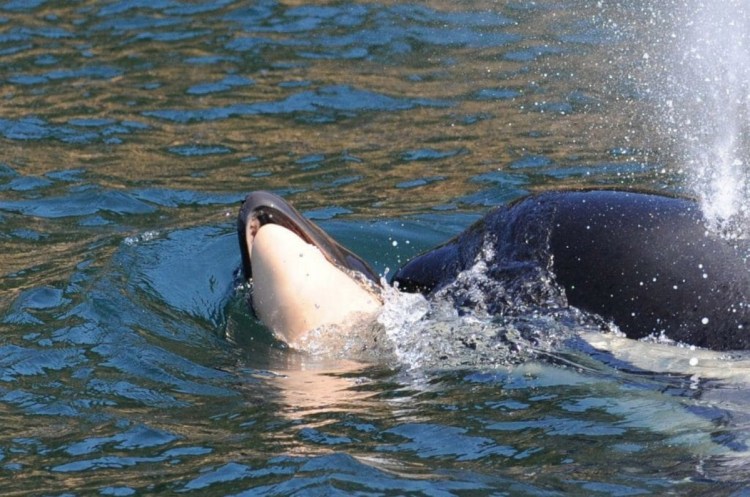A grieving orca whale has released the body of her dead calf after carrying it for at least 17 days through the Pacific Ocean in an unprecedented act of mourning, according to researchers.
On Saturday, Tahlequah, as the mother has come to be called, was observed swimming without the body of her calf, according to Center for Whale Research Founder Ken Balcomb.
“Her tour of grief is now over and her behavior is remarkably frisky,” read an update on the research center’s website.
The center said whale-watchers near Vancouver, British Columbia, had reported seeing Tahlequah without her calf’s body last week, but Saturday was the first time researchers were able to confirm those reports.
Tahlequah’s mourning had astonished and devastated much of the world.
The orca gave birth on July 25 in what should have been a happy milestone for her long-suffering clan.
As Allyson Chiu wrote for The Washington Post, the pod of killer whales that roams between Vancouver and San Juan Island has dwindled to 75 members over the decades. The cause is no mystery: Humans have netted up the whales’ salmon, driven ships through their hunting lanes and polluted their water, to the point that researchers fear Tahlequah’s generation may be the last of her family.
GRIEVING ANIMAL
The 400-pound, orange-tinted baby that wriggled out of her that morning was the first live birth in the pod since 2015, Chiu wrote. It lived about half an hour.
People love to anthropomorphize animals, often fallaciously. But studies have found that orcas really do possess high levels of intelligence and empathy, and emotions that may not be totally alien to our own.
So, when Tahlequah did not let her emaciated calf sink to the bottom of the Pacific, but rather balanced it on her head and pushed it along as she followed her pod, researchers thought they understood what was happening.
“You cannot interpret it any other way,” Deborah Giles, a killer whale biologist with the University of Washington, told Chiu. “This is an animal that is grieving for its dead baby, and she doesn’t want to let it go. She’s not ready.”
That was the beginning of a long funeral procession. “The hours turned into days,” Chiu wrote two days after the death. “And on Thursday she was still seen pushing her baby to the water’s surface.”
And still the next day, and through the weekend, and into the next week and next month.
RARE SIGHT
The act itself was not unprecedented, but researchers said it was rare to see a mother carry her dead for so long. It couldn’t have been easy for her. Tahlequah’s pod travels dozens of miles in a day, Chiu wrote, and she pushed her baby’s hundreds of pounds every inch of the way. She was forever picking up the body as it sank, hoisting it out of the water to take a breath, and repeating.
Researchers with the Canadian and U.S. governments and other organizations tracked her all the while, the Seattle Times wrote. They hoped to capture the calf once Tahlequah finally let go, and discover why it had died – as nearly all the babies in this pod seemed to.
But Tahlequah would not let go. Eventually, researchers stopped calling what they were witnessing “rare” and began using the word “unprecedented.”
The Center for Whale Research said Tahlequah “vigorously chased a school of salmon with her pod-mates” Saturday.
Send questions/comments to the editors.



Success. Please wait for the page to reload. If the page does not reload within 5 seconds, please refresh the page.
Enter your email and password to access comments.
Hi, to comment on stories you must . This profile is in addition to your subscription and website login.
Already have a commenting profile? .
Invalid username/password.
Please check your email to confirm and complete your registration.
Only subscribers are eligible to post comments. Please subscribe or login first for digital access. Here’s why.
Use the form below to reset your password. When you've submitted your account email, we will send an email with a reset code.